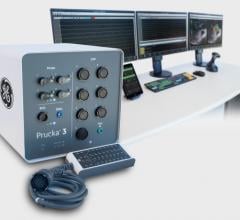
May 15, 2015 — A new expert consensus statement by the Heart Rhythm Society (HRS) recommends remote monitoring (RM) become standard of care for patients with cardiovascular implantable electronic devices (CIEDs). The HRS Expert Consensus Statement on Remote Interrogation and Monitoring for Cardiovascular Electronic Implantable Devices was written by an international group of experts and published online in HeartRhythm Journal, the official journal of HRS. This new approach presents a new paradigm for managing patients with CIEDs and will be presented at Heart Rhythm 2015, the Heart Rhythm Society’s 36th Annual Scientific Sessions.
Over the past decade, novel technologies have created the ability for devices to monitor their own function, record arrhythmias and communicate this information to healthcare providers without participation of the patient. Enrollment in RM has become accessible to all patients and allows doctors to monitor a patient’s device between follow-up visits and alerts them to any issues via wireless technology.
The new expert consensus statement builds upon the 2008 HRS/EHRA Expert Consensus on the Monitoring of Cardiovascular Implantable Electronic Devices (CIEDs), and reinforces the need for consistent follow-up and outlines the limitations of in-person-only follow-up. The writing group focuses on the organizational change required to most effectively implement RM by replacing the occasional, routine appointment to a system of nearly continuous monitoring, making it more convenient and efficient for the patient and healthcare provider. Recommendations also include that the patient have an in-person evaluation at the physician’s office in response to alert notifications communicated by RM.
“We’ve seen firsthand how the constant and continuous communication between the patient’s device and the healthcare provider is improving the quality and efficiency of care. There are proven advantages for the patient and we outline a specific strategy on how remote monitoring can benefit both patients and providers,” said task force chair and lead author of the statement, David Slotwiner, M.D.,FHRS, Hofstra School of Medicine, North Shore-Long Island Jewish Health in New Hyde Park, New York. “We hope that this type of wireless, remote monitoring that provides real-time insights to the patient’s healthcare team can become a model for managing other chronic conditions.”
Key recommendations within the expert consensus statement include the following:
- Remote monitoring should be combined with at least an annual in-person evaluation and all patients with CIEDs should be offered remote monitoring as part of the standard follow-up management strategy;
- Before implementing RM, it is recommended that each patient be educated about the nature of RM, responsibilities and expectations, potential benefits, limitations and an explanation of how RM information may be used;
- All CIEDs be checked through direct patient contact 2-12 weeks after being implanted; and
- Have specific policies in place to govern program operations, roles and responsibilities of those involved and the expected timelines for service provision.
The expert consensus statement was developed in collaboration with the American College of Cardiology (ACC), Pediatric & Congenital Electrophysiology Society (PACES), the American Heart Association (AHA), the Asia Pacific Heart Rhythm Society (APHRS), the European Heart Rhythm Association (EHRA) and Latin American Society of Cardiac Pacing and Electrophysiology (Sociedad Latinoamericana de Estimulación Cardíaca y Electrofisiología, SOLAECE).
For more information: www.hrsonline.org


 April 29, 2025
April 29, 2025 









